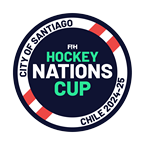
Who would want to be a goalkeeper? Facing shots of up to 100mph, head to toe in foam and peering out from behind a grille. England and Great Britain’s George Pinner talks about staying safe between the sticks.
George Pinner is recognised as one of the best goalkeepers in the world, recently winning a bronze medal with England at the Commonwealth Games. He plays his club hockey for Holcombe and made his international debut for Great Britain when he was just 20.
The 27-year-old has developed his own range of goalkeeping equipment – a process that gives him insight into developing technology. “I am lucky enough that I have designed all my own kickers, pads and gloves in conjunction with equipment manufacturer Monarch, therefore the kit is designed entirely to suit my needs.”
George talks us through the extensive kit list that serves to protect the men and women who guard the goal:
- Helmet – protection and safety comes before anything else. You only get one head and I value mine. I want my helmet to be as light as possible so I am always happy to compromise protection over weight. I use a top spec ice hockey helmet. Good vision is also important, so I always go for a grille that offers this.
- Chestpad, shorts, elbow pads – I compromise here between protection and being able to move freely. I chose products that should stop me breaking any bones but still allow me to move easily. A nasty hit to the hips, shoulders or elbows can put you out of action for a long time, while hits to fleshy areas hurt, but you can play on.
- Box – this is as important as my helmet! I have a top spec, triple-layer, ice hockey box as they undergo far more testing than hockey products and I believe they offer far greater protection.
- Kickers – protection is key closely followed by rebound. I want a kicker that protects me from the hard hitters but also allows me to clear the ball quickly in the same saving movement. Kickers must fit well so my toes are protected, but I don’t want the kickers to be too bulky as that will impede my movement.
- Leg guards - protection is the priority, closely followed by the ability to move quickly. I want a leg guard that protects my calf fully and with a maximum width so I have as big a saving area as possible. The kickers also have to allow me to slide easily.
- Gloves – the right-hand glove allows me to use the stick as an extension of my arm, and I need to be able to get my stick flat on the floor when diving. Maximum saving areas are also key.
Over the past five years, goalkeeping equipment has marched on apace. New types of foam has been one of the major developments, with protection the priority, but also important is how the ball rebounds from an initial shot. To allow the ‘keeper a greater amount of reaction time, the rebound needs to be as full as possible, something that manufacturers are working hard to deliver.
And as George says, no-one is ever completely safe: “While I have total faith in my foam kit, there are always those times when the ball finds a gap and hits a soft target.”

























